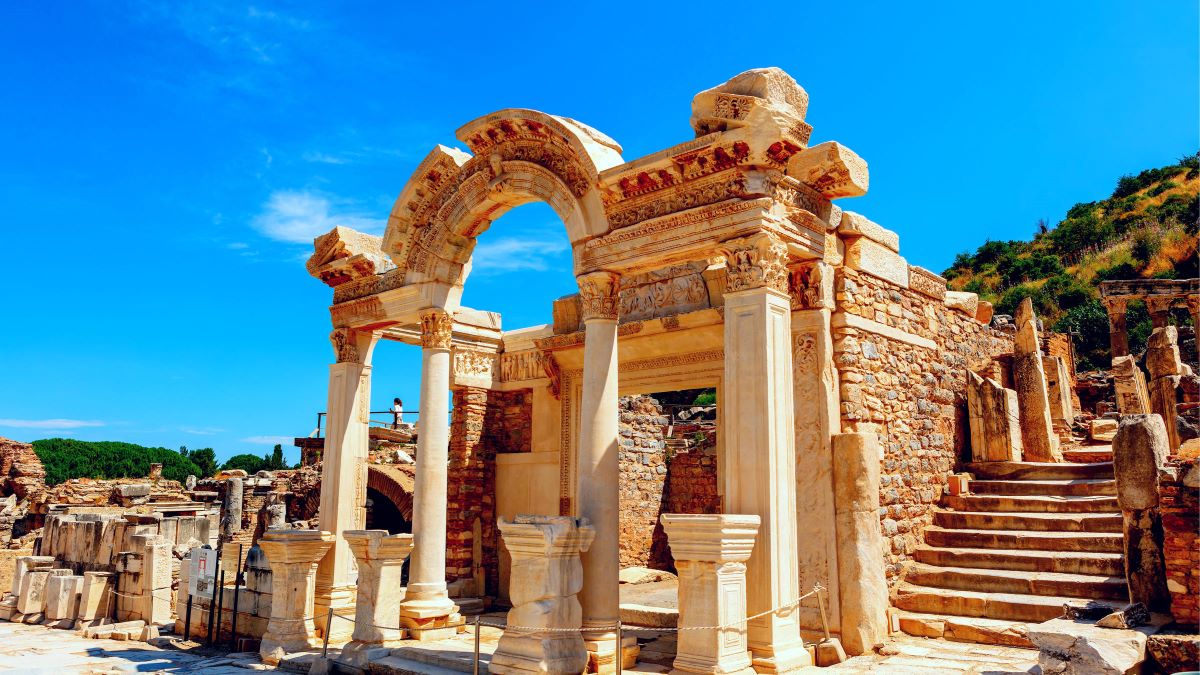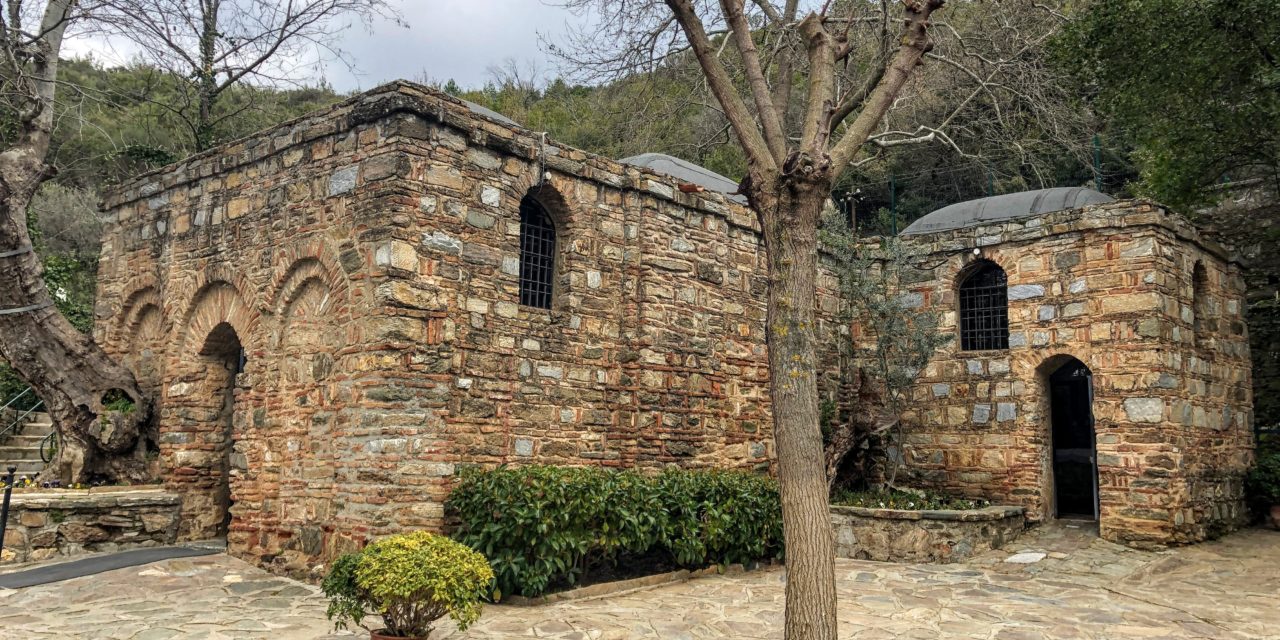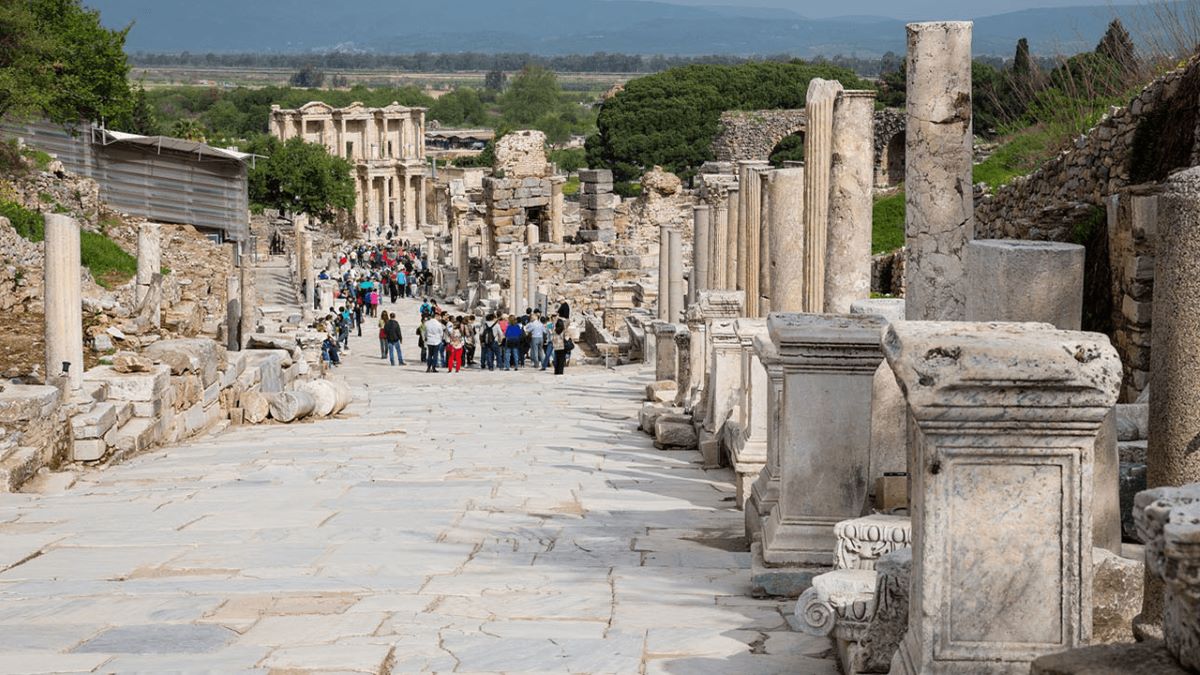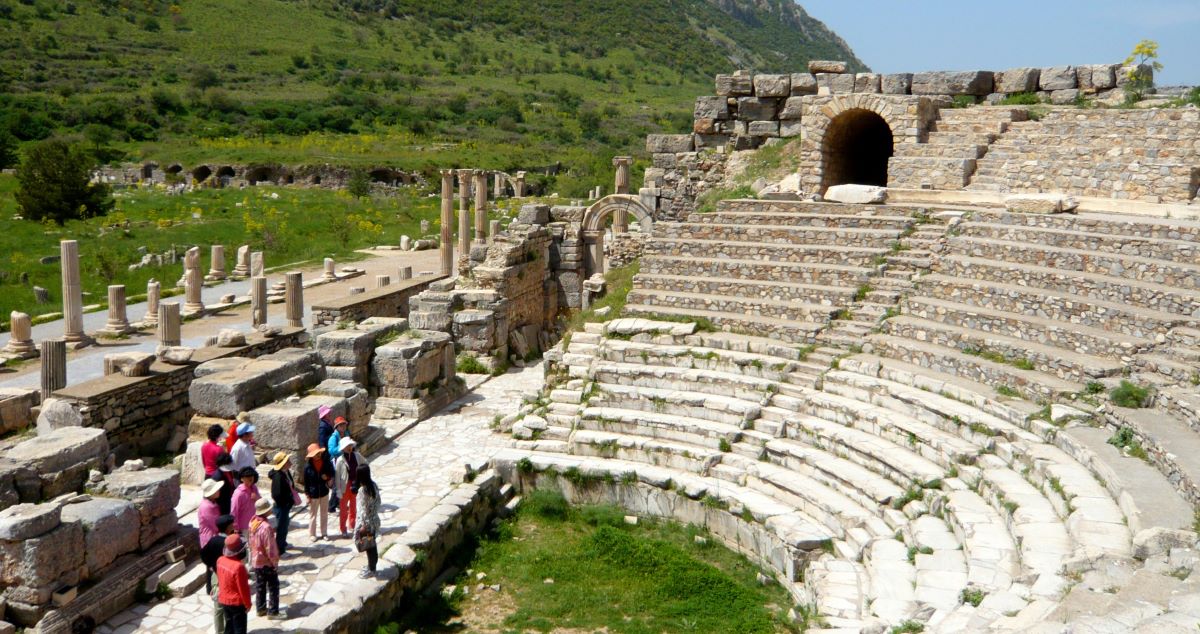The Virgin Mary's house is believed by some Christians to be the place where Mary…

Exploring Hadrian’s Temple in Ephesus: History, Architecture, and Significance
 Ephesus is a city that holds a wealth of history and culture. Once a bustling metropolis, it was home to some of the ancient world’s most significant architectural and cultural achievements. One of these achievements is Hadrian’s Temple, an imposing structure that dominates the city’s skyline.
Ephesus is a city that holds a wealth of history and culture. Once a bustling metropolis, it was home to some of the ancient world’s most significant architectural and cultural achievements. One of these achievements is Hadrian’s Temple, an imposing structure that dominates the city’s skyline.
Hadrian, the Roman emperor from 117 to 138 CE, was known for his interest in the arts, literature, and architecture. During his reign, he oversaw many construction projects throughout the Roman Empire, including the famous Hadrian’s Wall in Britain. In Ephesus, he commissioned the construction of a magnificent temple that would serve as a symbol of his power and prestige.
Ephesus was one of the Roman Empire’s wealthiest and most important cities. Its strategic location on the Aegean coast made it a hub of trade and commerce, and it was also home to the famous Temple of Artemis, one of the Seven Wonders of the Ancient World. Ephesus was a melting pot of cultures and religions, and its architecture and art reflect the influence of the Greeks, Romans, and other peoples who lived there over the centuries.
Together, Hadrian’s Temple and Ephesus represent a fascinating chapter in the history of the ancient world. In this blog post, we will explore the history, architecture, and significance of Hadrian’s Temple in Ephesus, shedding light on the legacy of one of the world’s most iconic architectural marvels.
Hadrian’s Temple was commissioned by the Roman Emperor Hadrian during his visit to Ephesus in 123 CE. Hadrian was known for his interest in architecture, and he saw the temple as a way to leave his mark on the city. The temple was designed to be a symbol of Hadrian’s power and a showcase of the latest architectural trends of the time.
The temple was constructed between 117 and 138 CE, during the height of Hadrian’s reign. The design was based on traditional Roman temple architecture, but it also incorporated elements of Greek and Eastern styles. The temple was constructed from marble and featured impressive columns, intricate carvings, and elaborate statues. The façade of the temple was adorned with sculptural reliefs depicting scenes from Greek mythology and Roman history.
The temple was dedicated to Hadrian, who was deified after his death, and it served as a place of worship and ceremony for the citizens of Ephesus. It was also used as a meeting place for important officials and as a venue for cultural events, such as music performances and poetry readings. The temple was a focal point of life in Ephesus and played an important role in the city’s religious and cultural life.
The façade of Hadrian’s Temple was grand and imposing, with six massive columns supporting an elaborate pediment. The entrance to the temple was marked by a grand staircase leading up to the temple’s elevated platform. The design of the entrance was meant to create a sense of awe and reverence for the temple and its patron, Hadrian.
The interior of the temple was divided into three main sections: the pronaos (entrance hall), the cella (inner sanctuary), and the opisthodomos (rear chamber). The pronaos was a large, open space that led to the cella, which housed the statue of Hadrian. The opisthodomos was a smaller chamber used for storage and as a workspace for the priests.
The decorative elements of Hadrian’s Temple were carefully chosen to reflect the temple’s significance as a place of worship and as a symbol of Hadrian’s power. The sculptures and reliefs depicted scenes from Greek and Roman mythology, as well as historical events and figures. Many of the sculptures were made from high-quality marble, and they were arranged in such a way as to create a sense of movement and fluidity throughout the temple.
The decorative elements of the temple were also meant to inspire awe and reverence in those who visited. The intricate carvings and beautiful sculptures were a testament to the skill and artistry of the ancient craftsmen who created them, and they remain a testament to the enduring legacy of Hadrian’s Temple in Ephesus.
The interior of the temple was decorated with beautiful marble sculptures and intricate carvings. The ceiling was adorned with frescoes depicting scenes from Roman and Greek mythology, and the walls were covered in delicate reliefs depicting various gods and goddesses.
The carvings in Hadrian’s Temple in Ephesus were an important aspect of the temple’s decorative elements. The temple was adorned with a variety of carvings, including sculptures and reliefs, which depicted various mythological and historical scenes.
The sculptures on the façade of the temple were particularly noteworthy. They depicted a variety of mythological figures, including the goddess Tyche, who was associated with good fortune and prosperity. Other sculptures included depictions of the gods Apollo and Artemis, as well as various other mythological figures.
The reliefs on the walls of the temple’s interior were also highly detailed and elaborate. They depicted scenes from both mythological and historical events, including battles and religious ceremonies. The reliefs were typically carved in high relief, which gave them a three-dimensional quality and made them stand out from the surrounding walls.
Hadrian’s Temple in Ephesus is known for its richly decorated façade and interior, which feature a variety of intricate carvings and sculptures. Here are some examples of the carvings in Hadrian’s Temple:
Façade: The façade of the temple is adorned with a variety of sculptures, including depictions of gods and goddesses, as well as scenes from mythology. One of the most prominent sculptures is a relief of Medusa, the mythical Gorgon with snakes for hair. Other sculptures on the façade include depictions of the goddess Athena, the god Apollo, and the Emperor Hadrian himself.
Interior: The interior of the temple is equally impressive, featuring a variety of carvings and decorative elements. The walls and ceiling of the temple are decorated with relief sculptures depicting scenes from mythology and daily life. Some of the most striking carvings in the interior include depictions of Nike, the goddess of victory, and the three-headed monster known as the Cerberus.
Altar: The temple also features an elaborate altar, which is decorated with carvings of various gods and goddesses, as well as scenes from mythology. The altar is adorned with intricate details, such as the depiction of a bull’s head and hooves at its base.
Hadrian’s Temple was a significant religious and cultural center in Ephesus during its time. It was dedicated to the deified Emperor Hadrian and served as a place of worship for the people of Ephesus. The temple was also an important venue for cultural events and ceremonies, such as music performances, poetry readings, and civic ceremonies. Its prominence in the city’s religious and cultural life made it an important symbol of Ephesian identity.
Hadrian’s Temple was one of the most significant examples of Roman temple architecture, and its design and construction influenced subsequent architectural styles and trends in the Roman world. The temple’s use of Greek and Eastern architectural elements, as well as its incorporation of decorative sculptures and reliefs, set the standard for Roman temple design for centuries to come. Its influence can be seen in the design of other Roman temples, as well as in later buildings throughout Europe and the Middle East.
Despite its grandeur and significance, the temple was eventually abandoned and fell into disrepair over the centuries.Today, Hadrian’s Temple remains an important historical and cultural landmark in Ephesus. Visitors can explore the ruins of the temple and appreciate the skill and artistry of the ancient craftsmen who created it. The temple also provides valuable insights into the religious and cultural life of the ancient city of Ephesus, and serves as a reminder of the enduring legacy of the Roman Empire. Its significance for modern-day visitors to Ephesus lies in its ability to connect them with the rich cultural heritage of the ancient world.
Hadrian’s Temple in Ephesus is an enduring testament to the architectural and artistic achievements of the ancient world. It is a reminder of the cultural and religious diversity of the Roman Empire, and serves as a symbol of the enduring legacy of that civilization. The temple has also influenced subsequent architectural styles and trends, and continues to inspire awe and admiration in visitors to Ephesus today. Its enduring legacy lies not only in its physical remains, but in the cultural and historical significance that it represents. As such, Hadrian’s Temple remains an important part of the world’s cultural heritage, and a valuable resource for those interested in the history of the ancient world.




This Post Has 0 Comments